DATA SOURCE(S): 2,4
Common Name(s): Coast redwood, giant sequoia, California redwood, vavona (burl)
Scientific Name: Sequoia sempervirens
Distribution: Coastal northwestern United States (from southwestern Oregon to central California)
Tree Size: 200-300 ft (60-90 m) tall,
6-12 ft (1.8-3.7 m) trunk diameter
Average Dried Weight: 26 lbs/ft3 (415 kg/m3)
Specific Gravity (Basic, 12% MC): 0.36, 0.42
Janka Hardness: 450 lbf (2,000 N)
Modulus of Rupture: 8,950 lbf/in2 (61.7 MPa)
Elastic Modulus: 1,220,000 lbf/in2 (8.41 GPa)
Crushing Strength: 5,690 lbf/in2 (39.2 MPa)
Shrinkage: Radial: 2.4%, Tangential: 4.7%,
Volumetric: 6.9%, T/R Ratio: 2
Color/Appearance: Heartwood color can range from a light pinkish brown to a deep reddish brown. Sapwood is a pale white/yellow. Figured pieces with curly grain or burl (sometimes referred to as redwood lace or ‘vavona’) are occasionally seen.
Grain/Texture: Grain is generally straight, though figured pieces may be be wavy or irregular. Coarse texture with low natural luster.
Rot Resistance: Rated as moderately durable to very durable regarding decay resistance. Lumber from old-growth trees tends to be more durable than that from younger second-growth trees.
Workability: Typically easy to work with hand tools or machinery, but planer tearout can occur on figured pieces with curly, wavy, or irregular grain. Glues and finishes well.
Odor: Redwood has a distinct odor when being worked, though unlike cedar, this odor subsides after being worked.
Allergies/Toxicity: Although severe reactions are quite uncommon, coast redwood has been reported as a sensitizer. Usually most common reactions simply include eye, skin, and respiratory irritation, as well as asthma-like symptoms. See the articles Wood Allergies and Toxicity and Wood Dust Safety for more information.
Pricing/Availability: Should be in the mid to upper price range as a construction lumber, though clear and/or figured woodworking lumber is likely to be much more expensive.
Sustainability: This wood species is not listed in the CITES Appendices, but is on the IUCN Red List. It is listed as endangered due to a population reduction of approximately 50% in the past three generations, caused by a decline in its natural range, and exploitation.
Common Uses: Veneer, construction lumber, beams, posts, decking, exterior furniture, and trim. Burls and other forms of figured redwood are also used in turning, musical instruments, and other small specialty items.
Comments: Capable of attaining heights of nearly 400 feet (122 meters), coast redwood is the world’s tallest tree species. It grows in a very limited area on the Pacific coast of northwestern United States, where heavy rainfall and cool, damp air create a unique environment for these trees. A related species, Sequoiadendron giganteum, sometimes known as giant sequoia or wellingtonia, produces very similar lumber—though the wood is much more brittle and of lower commercial potential.
Coast redwood lumber is very soft and lightweight, with a decent strength-to-weight ratio. It is also exceptionally stable, with very little shrinkage or seasonal movement. The mechanical values listed at the top of the page represent the averages between both old-growth lumber and second-growth lumber—though old-growth lumber is generally stronger and denser than second-growth material.
For clarity, the values of each type of lumber is separated out below.
OLD-GROWTH LUMBER
Average Dried Weight: 28 lbs/ft3 (450 kg/m3)
Janka Hardness: 480 lbf (2,130 N)
Modulus of Rupture: 10,000 lbf/in2 (69.0 MPa)
Elastic Modulus: 1,340,000 lbf/in2 (9.24 GPa)
Crushing Strength: 6,150 lbf/in2 (42.4 MPa)
SECOND-GROWTH LUMBER
Average Dried Weight: 24 lbs/ft3 (385 kg/m3)
Janka Hardness: 420 lbf (1,870 N)
Modulus of Rupture: 7,900 lbf/in2 (54.5 MPa)
Elastic Modulus: 1,100,000 lbf/in2 (7.58 GPa)
Crushing Strength: 5,220 lbf/in2 (36.0 MPa)
Images: Drag the slider up/down to toggle between raw and finished wood.
A special thanks to Salem Barker for providing the sculpture photo of this wood species.
Identification: See the article on Softwood Anatomy for definitions of endgrain features.
Resin canals : absent
Tracheid diameter : large to very large
Earlywood to latewood transition : moderately abrupt
Grain contrast : medium
Parenchyma : diffuse
Lookalikes/Substitutes: With its very lightweight yet dark reddish brown heartwood (especially after a finish has been applied), there aren’t very many woods that can be confused with coast redwood. The most likely candidate for confusion is western red cedar (Thuja plicata). Generally, cedar is lighter in color than redwood, and has a distinct lingering scent.
Notes: None.
Even though there are many species of Sequoia found in the fossil record, S. sempervirens is the sole living species today. But the Cupressaceae family contains a subfamily, Sequoioideae, which contains a total of three extant species—each from three different genera.
Related Content:

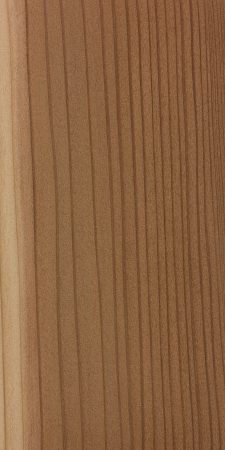
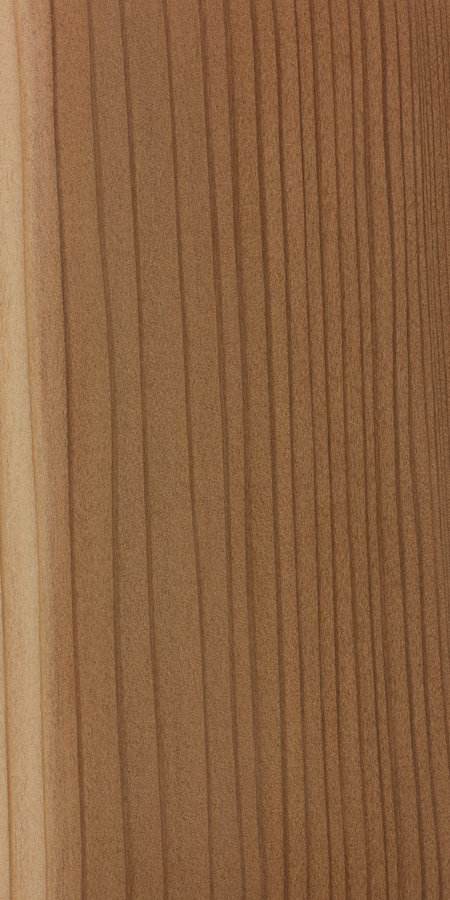
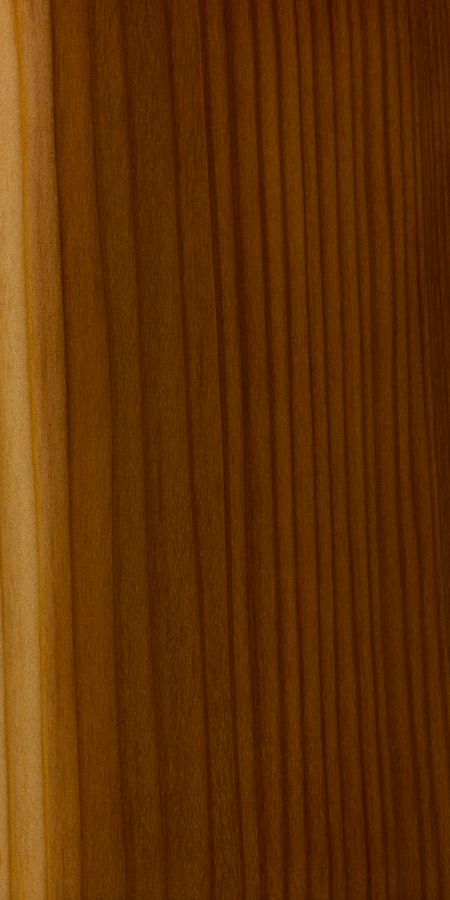
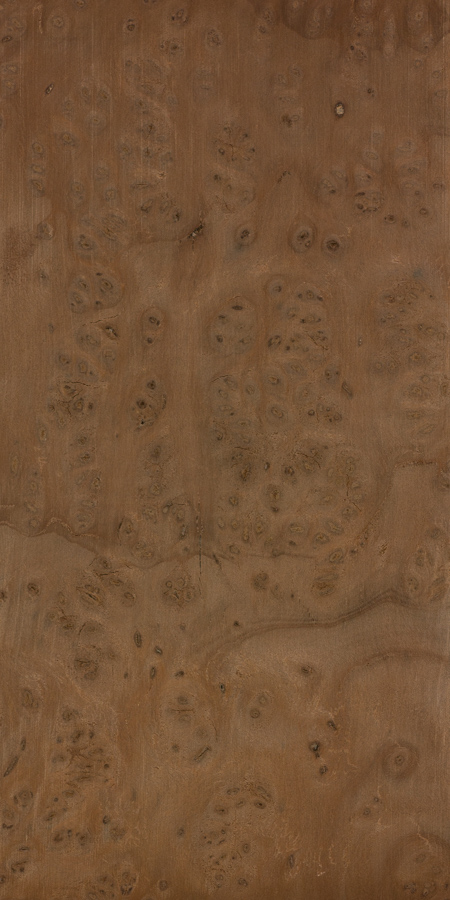
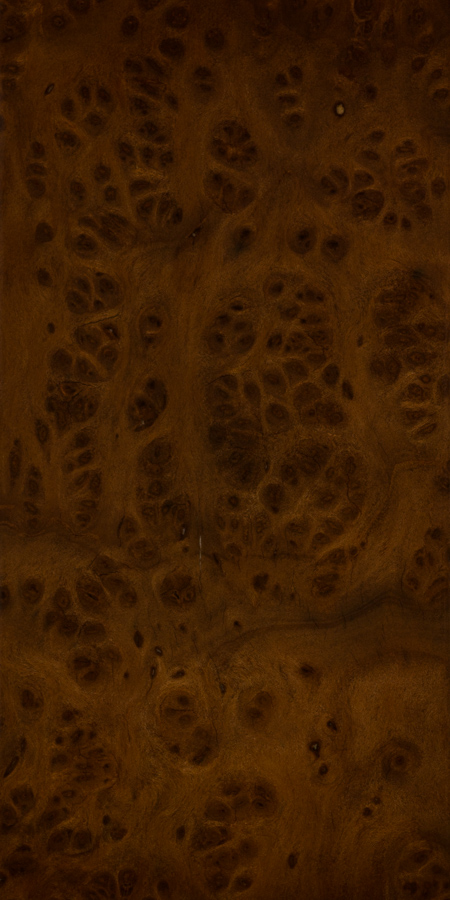
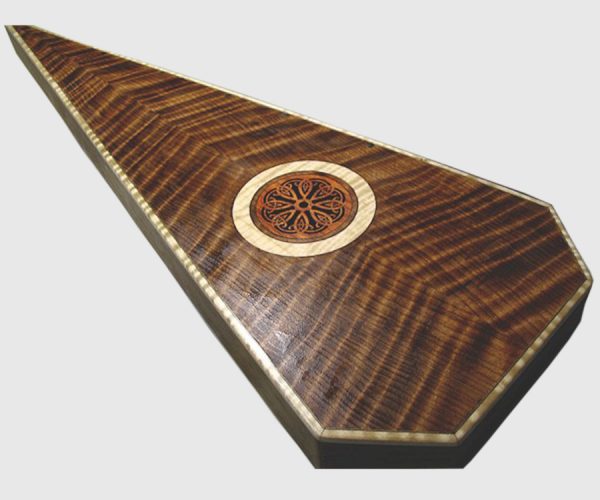
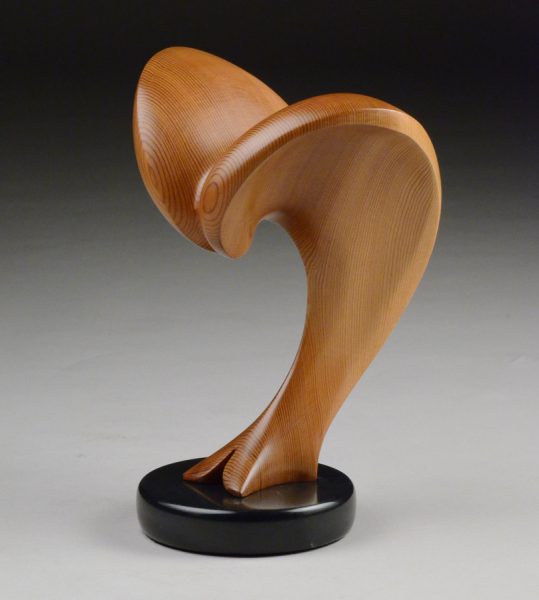
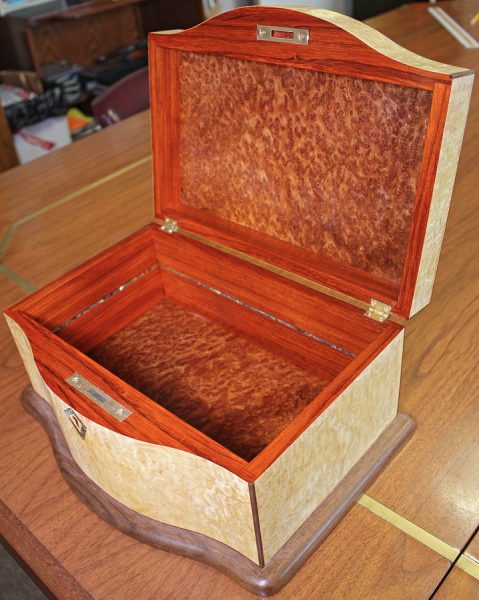
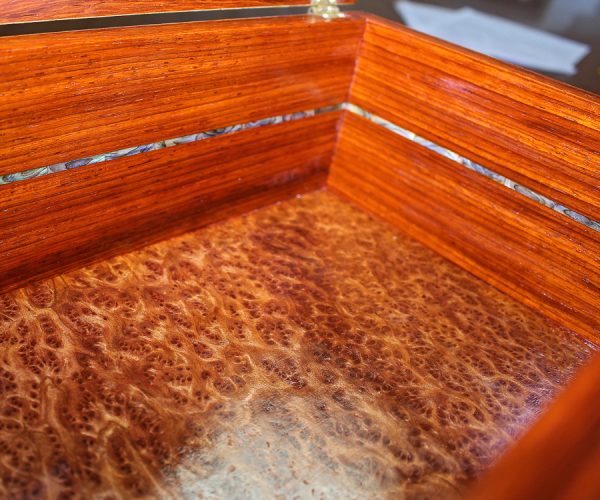
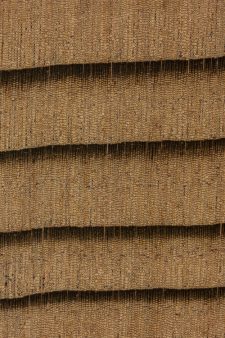

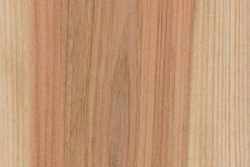
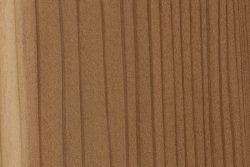
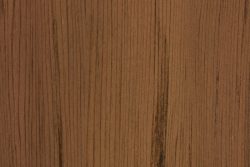
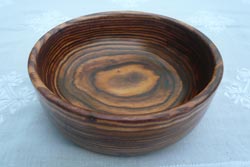
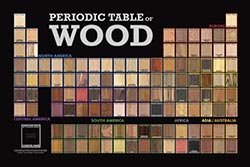





I use redwood for borders around cutting boards. Each cutting board is checkerboard patterned and made from endgrain hardwoods. The redwood, which is used side grain, provides ideal properties for the border. It is attractive, easily worked, and sufficiently strong. However, it does not add excess weight because it is so light.
That kayak looks awesome. you should be very proud!
Here are some redwood stools I made.
Looks good Jack! I’m curious what you used to fill the checks in the round portion? Particularly the reddish colored fills.
Glad you asked. I used a mixture of titebond III glue and the sawdust created when i planed smooth the top and bottoms of the rounds using a power hand planner. You really don’t know how the color will turn out cause some will turn out red and some a darker color based on the sawdust itself.
I’m curious, did you do any force analysis on the stool? I would really appreciate a heads up if any. I face with a situation I have to analyse the forces acting on the seat surface and the legs.
I did not do a force analysis on the stools. The leds are 1 1/4 by 1 1/4 by 16 inches. I cut one inch tenons on the ends and then threaded them using a tread cutter just for wood. The holes in the stools are drilled at a ten degree angle and then threaded. Before I twist each leg into place, i smear some glue onto the theaded sections. The legs are three to stay once the glue is cured. The legs for the two darker stools are made from reclaimed birch and oak for the remaining four stools.
Hi Dean from Fl I come into possession of a section of the root of a Ca redwood tree in 1967, I made a table out of it, it’s about 6 ft long and 2 1/2 wide and 3 inches thick, weighed about 90 pounds, very beautiful pcs of wood, I have fallen on hard times in my old age and wondered what it might be worth. Can anyone help?? It’s just resting on a stained pine base. The underside is not finished, never had holes drilled in it and has the original saw cut marks in it, the top… Read more »
I’m guessing several hundred dollars.
Another use is a top for guitars
Another use for redwood, wood strip built kayak
Where can I get some redwood carbon dated?
Hi: I have a piece of redwood that my husband made into a table. When we had it finished, the finisher noticed flecks of minerals in the grain. Have you ever heard of anything like that? We don’t know for sure, but we believe the piece is from CA. Could you please respond if you are aware of rare minerals ever showing up in redwoods.
Thanks.
Sarah
This may have been reclaimed redwood that sunk to the bottom of a river during transport to the mill, became mineralized over many years, and was then reclaimed years later.
that actually looks like Swamp Kauri
Hi. I’ve seen that too. Some pieces I have it came from tartrates in the wine that was in the redwood wine tank.